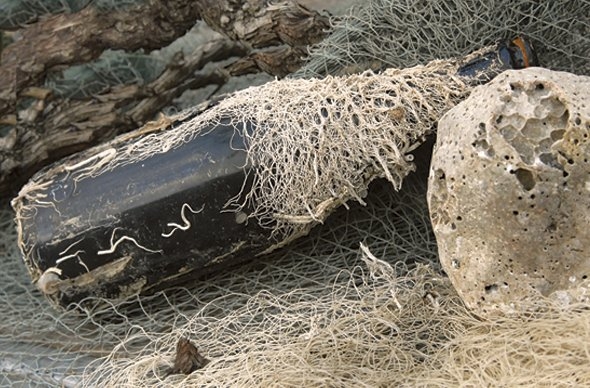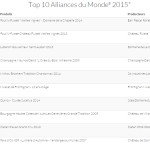30 bottles were recovered from the sea bottom and enjoyed by 200 guests on the boat back to Vrbnik
“I want to create aged sparkling wines, but old cellars don’t offer such conditions. The temperature changes too much, there is noise, light comes on and off and there isn’t enough peace for a perennial second fermentation in the bottle. As the cellar is next to the sea, I wondered if the bottom of the sea offers perfect conditions? It is dark, peaceful, quiet. At 32 metres of depth the temperature is 12 degrees, with barely noticeable oscillations. In 2006 we lowered the first bottles,” Marinko Vladić recalls the experiment from ten years ago, the manager and enologist of the Agricultural Cooperative Vrbnik, as published on Vino.hr on August 14, 2016.
Some of the bottles were recovered a year later and the champagne was good. Since then every year they have been sending a part of the Valomet sparkling wine to the bottom, made from the indigenous Krk sort White Žlahtina. They recover around 200 bottles every year, and this has become a first-class attraction. 30 bottles were used to celebrated the purchase of a 13,000 square metre space for a new cellar.
“Around 200 of us gathered and we drank it all on the boat, before we got back to Vrbnik,” Vladić laughed, originally from Ilok but married in Krk, so instead of Traminer, Green Silvanac and Graševina in the Danube, he plays with Žlahtina in the sea. A sparkling wine requires a tranquil wine filled in bottles with yeast and closed off with a metal crown cap, such as the one on beer bottles.
This is a classical, natural method of creating bubbles in Champagne. From such a sparkling wine, the yeast residue needs to be removed before marketing the wine and close it with a cork secured with a wire so it wouldn’t pop under pressure.
The second fermentation in the sea presented a metal cap problem which tends to give way in the sixth-seventh year. The first bottles on the bottom had to be recapped.
“This is not a satisfactory solution so we will limit the aging of the Sea Valomet to five years. We are looking for another solution for the caps, maybe plastic. If they turn out to be good, we will age it seven to eight years, as they do with the best sparkling wines,” Vladić concluded.











